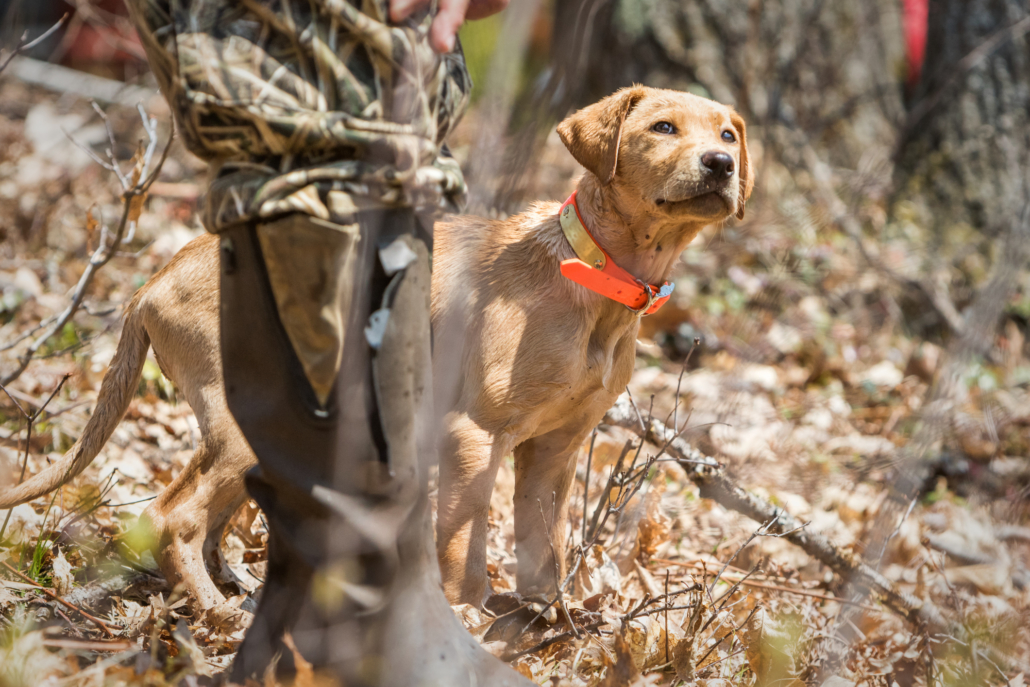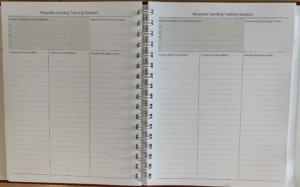Looking at the 10-day forecast, it seems Spring has sprung (or is springing). With that, it’s time to work on spring training for your gundog. This blog post is a followup on the last Live Facebook session we did on May 6th entitled Three Core Foundations of Gundog Training – The Plan. You can find that video on our Facebook page here.
An Honest Assessment
If you are like me, I usually take the winter off from formal training, other than continued obedience work in the house. However, remember that dogs are always learning and morphing their behavior according to your level of leniency. If you are lenient in your demands for obedience any time of the year, you will have more to train through when formal training starts back up.
Consistency is important throughout a dog’s life and instills confidence in you as pack leader. Inconsistent direction and behavior from the pack leader leads to confusion in the dog and knowing what is expected from you. Therefore, I always recommend obedience work in the house throughout winter and an honest evaluation of where your dog is before starting spring training.
At the beginning of the season, focus first on basic obedience and steadiness drills and work up from 15 minutes in a training session to 30-45 minutes (or more), depending on the age, fitness and attention span of the dog. Always watch for boredom and if you see it, either change up the drill(s) or stop immediately. You still want this to be a fun bonding time with your pup and don’t want to immediately exhaust him/her and diminish the fun of future training sessions!
The Training Session
Ok, now for the training session. This is the toughest part for many people because they don’t plan for a training session. Then they wonder why they aren’t making the progress that they want. The solution is to develop a plan to consistently track progress and find holes in the training process for the dog. The picture to the right is of a training journal that I give clients to help them track progress. (Click on it and feel free to print copies for yourself).
Now that you know the benefits of developing a plan and have an outline for what a planning journal can look like, lets look at how I setup a training session with my dogs. Below is the general layout. Take a look at it and remember that every dog is different and learns at its own pace. Don’t hurry your dog and trust the process.
Bespoke Gundogs Looped Training Session
Foundational Warmup:
- Control: Slow heal 20-25 yds at a consistent pace. Can add sit-stops if your dog knows them.
–Sets goal of Patience/Foundation of Steadiness/Calm down - Power Walk: Long, brisk walk (40+yards) w/o stops, retrieves or other activities
–Reinforces leadership & control - Discipline: Denials / tennis ball rolls / reverse heel / square heel pattern work / sit to flush (denial) / sit to whistle / agility
–Reinforces obedience skills & promotes patience and concentration at the beginning of session
–(Heel a short distance to where you are going to do your next skill)
Maintenance Skill (One that is already mastered): Beginning: Sit/Whoa on Command or even beginning heel work. Intermediate: Heel with Sit/Whoa Stops. Advanced: Retrieves with hand signals.
–(Heel to next location for the New Skill)
New Skill: Choose a skill. Break it down into teachable steps below.
Breakdown:
- _________________________________
- _________________________________
- _________________________________
- _________________________________
–(Heel)
Maintenance Skill (Optional): Choose a skill that is already mastered or close to so. “Mastered” equals being able to perform a skill at least 7 or 8 out of 10 times in 3-4 different locations.
–(Heel)
Counter-skill (Enjoyable Established Skill): This is a skill that is fun for the dog and is not related to the skill “theme” of that session. Maybe chasing a frisbee or tennis ball. Remember to enforce steadiness still.
Of course the above session can be adjusted to what you are working on with your puppy or dog. It is important to bookend a new skill with established/maintenance skills to reinforce confidence in your dog. Additionally, working with a professional trainer will help keep you on track and provides you a source for solutions to issues along the way.
Get out with your pup as these days get longer and warmer. Have fun no matter whether you are working an 8 week old prospect or a seasoned professional and enjoy the time bonding and building trust with your hunting partner! If you have any questions please don’t hesitate to drop me a line at [email protected].
Train Smart,
Chris


